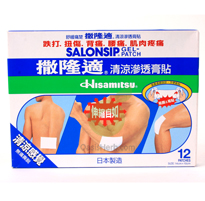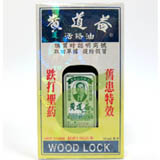‘‘Long Live Your Imperial Majesty’’ was the formal address to the Chinese emperors who reigned for more than 2,000 years (between 221 BC and AD 1911) in China. The emperors had the absolute power, as well as supreme rank and utmost dignity. Many emperors also lived in lavish and extravagant lives. But did the power and wealth of these emperors allow them to live longer than Buddhist monks or traditional Chinese doctors?
A study published in Aug 2006 issue of the American Journal of Geriatrics Society reviewed the lifestyle, age and cause of death of all the Chinese emperors and compared their age of death with that of the Buddhist monks and the traditional doctors living in the same dynasties.
259 Chinese emperors reigned during the 24 dynasties from the first Qin Dynasty (221–207 BC) to the last Qing Dynasty (AD 1616–1911), but the age of death were only available for 240 emperors.
To most people surprise, the mean age at death of the emperors was significantly lower than that of the Buddhist monks and traditional Chinese doctors (41 years old for the emperors vs. 67 years old for the monks vs. 75 years old for the traditional Chinese doctors). Even the emperors’ servant eunuchs outlived the emperors (mean age 71.3 (range 55–94 years old)) (Table 1).
Table 1. Age at Death of Chinese Emperors, Buddhist Monks, and Traditional Doctors
| Age at Death | Emperor(n=241) | Buddhist Monk (n=140) | Traditional Doctor (n=181) |
| <20, n (%) | 28 (11.6) | 2 (1.4) | 0 (0) |
| 20-29, n (%) | 46 (19.1) | 7 (5.0) | 0 (0) |
| 30-39, n (%) | 47 (19.5) | 12 (8.6) | 3 (1.7) |
| 40-49, n (%) | 38 (15.8) | 5 (3.6) | 3 (1.7) |
| 50-59, n (%) | 42 (17.4) | 19 (13.6) | 20 (11.0) |
| 60-69, n (%) | 29 (12.0) | 27 (19.3) | 34 (18.8) |
| 70-79, n (%) | 7 (2.9) | 39 (27.9) | 56 (30.9) |
| 80-89, n (%) | 4 (1.7) | 14 (10) | 42 (23.2) |
| 90-99, n (%) | 0 (0) | 8 (5.7) | 16 (8.8) |
| >100, n (%) | 0(0) | 7 (5.0) | 7 (3.9) |
| Range | 2-89 | 17-20 | 32-109 |
| Mean + standard deviation | 41.3 + 17.9 | 66.9 + 20.7 | 75.1 + 13.4 |
What did the Emperors die early?
While some emperors were murdered by others (68 or 28%) or committed suicide (5 or 2%)), most of them died naturally (160 or 66%). However, when the researchers examined the documented lifestyles of the 88 emperors who died naturally, they discovered their early deaths might be related to their unhealthy lifestyles.
Among the 88 emperors with documented lifestyles, 82 (93.2%) were overindulgent in drinking alcohol (n=9), sexual activity (n=8), or both (n=65). The overindulgent emperors had an age at death similar to that of those who died from homicide or suicide. The mean age of death was 31.4 (range 18–31) for the sexually overindulgent emperors, 38.6 (range 23–60) for the alcoholics, and 36.6 (range 23–55) for those overindulgent in alcohol and sexual activity (Table 2).
Table 2. Average age of death for Emperors who were overindulgent in drinking alcohol, sexual activity or both
| Mean age at death | |
| Overindulgent in drinking alcohol (n=9) | 31.4 (18-31) |
| Overindulgent in sexual activity (n=8) | 38.6 (23-60) |
| Overindulgent in drinking alcohol and sexual activity (n=65) | 36.6 (23-55) |
In contrast, only six emperors performed regular exercise and refrained from overindulgence. They survived to a mean age of 81.0 + 7.6 (range 69–89). All six of these long-lived emperors championed a simple lifestyle.
For example, Emperor Wu of Liang (AD 464–549) was a Buddhist monk before he was enthroned as the first emperor of the Liang Dynasty (AD 502–557). He was also a scholar of literature, music, and calligraphy.
Emperor Qianlong (AD 1711–1799), the fourth emperor of the Qing Dynasty (AD 1644–1911), traveled extensively around China and was accomplished as a master in martial arts, literature, calligraphy, and painting.
In conclusion, this study tells us that supreme power and an extravagant life can not give you longevity. In contrast, overindulgence in drinking alcohol, drugs, and sexual activity exhibited by the short-lived Chinese emperors can shorten your life.
Please visit us at healthreason.com for more health related articles.
Source: Aug 2006 issue of the American Journal of Geriatrics Society





